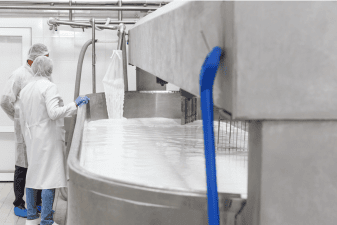In the U.S., food safety is a shared responsibility among government agencies, standards-writing organizations, inspectors, manufacturers, as well as facility and processing equipment designers. With so many stakeholders, navigating terminology and standards, while determining the path to safety and compliance, can be confusing; terms like “food grade” are not defined by any one organization.
Regulatory Agencies
The food industry is primarily regulated by the FDA and the USDA. The FDA typically applies the term “food grade” to food additives and ingredients. Used in this context, the term refers to whether the substance is Generally Recognized As Safe (GRAS) for its intended use, which relates to the suitability, purity, and safety of the substance for human consumption.
Standards Writing and Certification Organizations
Other agencies that get close to defining “food grade” and evaluate compliance to “food grade” regulations are various standards writing and certification organizations such as NSF, 3-A, EHEDG, SGS, and UL.
These organizations write standards to ensure the design and installation of products and equipment meet food safety regulations and best practices. They consider the location where a product will be used and the product’s intended application. A number of factors, including whether product contact surfaces are made from “food grade” materials and whether the product can be easily and thoroughly cleaned, are evaluated.
Stainless Steel as Food Grade
Facility designers, builders, and operators often take it one step further and apply “food grade” to materials and products used in a facility. In this context, the term refers to the material(s) from which a building product and/or piece of equipment can be made and implies that the material is:
- corrosion resistant (over 16% chromium);
- chemically stable and non-leaching;
- non-burning;
- non-porous and easy to clean and sanitize.
Stainless steel meets all these criteria and helps prevent the contamination of food batches.
Food Grade Conduit Systems
Where explicit standards do not exist, such as for a food-grade electrical conduit system, principles from both electrical safety standards (i.e., UL) and food safety standards (e.g., NSF) can be applied to bridge the gap. Gibson Stainless provides rigid conduit systems in Types 304 and 316 stainless steel alloys; both of which can be considered “food grade”. Their corrosion resistance, chemical stability, and ease of cleaning make Gibson Stainless products a trusted choice for food and beverage environments that demand high standards of cleanliness and durability.

